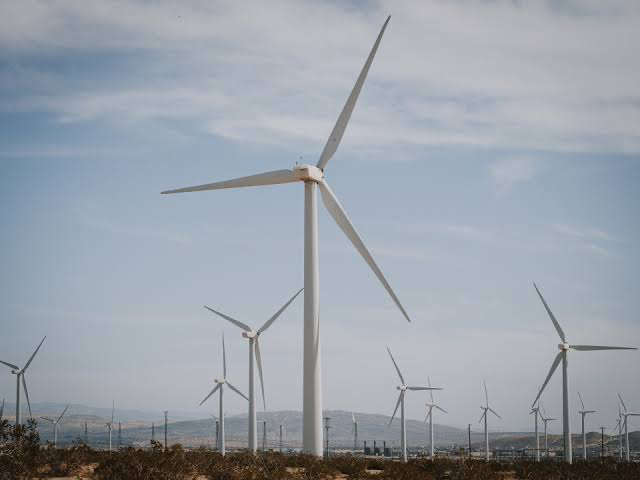KEY POINT
- $5.4 trillion mineral investment for energy transition needed by 2035.
- Demand for key minerals like lithium and cobalt is driving costs.
- Global mining sector must scale production to support clean energy goals
A staggering $5.4 trillion in mineral investments will be required to meet the growing demand for key minerals essential to the global energy transition, according to a report by FMF2024. The report highlights the urgent need for increased mining and production of critical minerals like lithium, cobalt, copper, and rare earth elements to support the shift toward clean energy technologies.
The transition to renewable energy sources such as solar, wind, and electric vehicles (EVs) relies heavily on these minerals. As demand for EV batteries, wind turbines, and solar panels surges, mining operations must scale up to meet the requirements. FMF2024 predicts that without sufficient investment in mining, global clean energy goals may face delays.
The $5.4 trillion investment forecast covers exploration, extraction, and processing activities needed to increase the supply of critical minerals. Experts argue that this level of investment is necessary to meet the rising demand for materials required for battery production, renewable energy infrastructure, and smart grid technologies.
Why the energy transition requires record-breaking mining investments
The energy transition is driving unprecedented demand for minerals, and the numbers tell a compelling story. According to FMF2024, the production of critical minerals must increase by up to 500% to meet future clean energy targets. Lithium, cobalt, copper, and nickel are the most sought-after elements for use in EV batteries, renewable energy storage, and power grid upgrades.
Key drivers of the investment demand:
- Electric vehicles (EVs):
The shift from internal combustion engine (ICE) vehicles to EVs has accelerated global demand for lithium, nickel, and cobalt. Battery production requires these minerals, and the demand for EVs is expected to grow exponentially over the next decade. FMF2024 estimates that EV-related mineral needs could increase threefold by 2030. - Renewable energy infrastructure:
Solar panels, wind turbines, and hydropower plants all require essential minerals like copper, aluminum, and rare earth elements. As countries ramp up renewable energy installations, mineral demand is projected to spike significantly. For example, wind turbines use large quantities of copper, and solar panels require silver and silicon, all of which face supply constraints. - Energy storage and smart grids:
The transition to a green energy grid demands higher investments in large-scale energy storage solutions like lithium-ion batteries. These batteries require raw materials such as lithium, nickel, and cobalt. Additionally, power grid upgrades will increase the demand for copper to support grid expansion, smart meters, and energy storage systems.
The FMF2024 report underscores that without adequate investment, shortages in critical minerals could slow down the adoption of green technologies. Insufficient supply could lead to price hikes, threatening the affordability of clean energy solutions.
Impact of the $5.4 trillion investment on global green energy
The $5.4 trillion mineral investment outlined in the FMF2024 report has the potential to shape the global energy landscape. If successfully mobilized, the investment could help countries meet their decarbonization targets, accelerate the shift to renewable energy, and drive the growth of the electric vehicle market.
Potential positive impacts:
- Job creation:
Investment in the mining sector could create millions of jobs globally, especially in developing countries rich in mineral resources. From exploration and extraction to processing and logistics, the entire supply chain would see an increase in employment opportunities. - Supply chain resilience:
One of the biggest challenges in the energy transition is the reliance on a limited number of countries for critical minerals. Diversifying mining operations to other regions could reduce dependency on key suppliers like China, thereby strengthening global supply chain resilience. - Clean energy expansion:
With more minerals available for EV batteries, solar panels, and wind turbines, countries can accelerate their shift to clean energy. This would bring the world closer to achieving the goals of the Paris Agreement and limiting global warming to 1.5°C.
However, there are risks and challenges associated with the $5.4 trillion investment. Environmental, social, and governance (ESG) concerns could slow down project approvals, especially in regions where mining activities may affect biodiversity or local communities. Stricter regulations and environmental protests have historically delayed mining operations.
As the world transitions to a low-carbon future, FMF2024 warns that greater transparency and responsible mining practices will be critical to ensure the sustainability of mineral extraction. Stakeholders are calling for environmentally friendly mining methods and the use of recycled minerals to reduce pressure on virgin raw material extraction.
With global demand for minerals at an all-time high, the success of the energy transition depends on timely and sufficient investment. The $5.4 trillion requirement represents both a challenge and an opportunity for governments, private investors, and mining companies to secure the future of clean energy.



